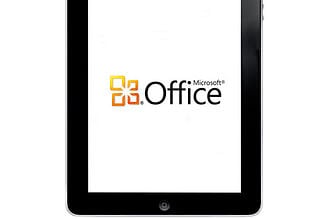
Cloud computing is a growing market. According to a study by Forbes, Cloud computing is projected to increase from $67B in 2015 to $162B in 2020 attaining a CAGR of 19%. With new enterprises rapidly moving to the cloud, these solutions have become mainstream in business as well as personal life. From our daily emails to phone storage, everything is stored and managed by cloud computing. The uses of cloud computing are not just limited to personal emails or storage, rather these scalable solutions have become the medium of choice for development, testing and deployment of software as well. The examples of cloud computing are everywhere from the messaging apps to audio and video streaming services. Here we will see the top 10 cloud computing examples and understand what features of cloud have led to its popularity in the market.
Top 10 Uses and Examples of Cloud Computing:
1. Scalable Usage:
Cloud computing offers scalable resources through various subscription models. This means that you will only need to pay for the computing resources you use. This helps in managing spikes in demands without the need to permanently invest in computer hardware.
Netflix, for instance, leverages this potential of cloud computing to its advantage. Due to its on-demand streaming service, it faces large surges in server load at peak times. The move to migrate from in-house data centres to cloud allowed the company to significantly expand its customer base without having to invest in setup and maintenance of costly infrastructure.
Read More: Choosing the Right Cloud Solution Provider – AWS vs Azure vs GCP
2. Chatbots:

The expanded computing power and capacity of the cloud enables us to store information about user preferences. This can be used to provide customized solutions, messages and products based on the behaviour and preferences of users.
Siri, Alexa and Google Assistant – all are cloud-based natural-language intelligent bots. These chatbots leverage the computing capabilities of the cloud to provide personalized context-relevant customer experiences. The next time you say, “Hey Siri!” remember that there is a cloud-based AI solution behind it.
Know More: What is an Artificially Intelligent Chatbot and how are they developed?
3. Communication:
The cloud allows users to enjoy network-based access to communication tools like emails and calendars. Most of the messaging and calling apps like Skype and WhatsApp are also based on cloud infrastructure. All your messages and information are stored on the service provider’s hardware rather than on your personal device. This allows you access your information from anywhere via the internet.
Read More: 5 Reasons: Why Should Startups Consider Cloud?
4. Productivity:

Office tools like Microsoft Office 365 and Google Docs use cloud computing, allowing you to use your most-productive tools over the internet. You can work on your documents, presentations and spreadsheets – from anywhere, at any time. With your data stored in the cloud, you don’t need to bother about data loss in case your device is stolen, lost or damaged. Cloud also helps in sharing of documents and enables different individuals to work on the same document at the same time.
Read More: 10 Steps for Successful Cloud Migration
5. Business Process:
Many business management applications like customer relationship management (CRM) and enterprise resource planning (ERP) are also based on a cloud service provider. Software as a Service (SAAS) has become a popular method for deploying enterprise level software.
Salesforce, Hubspot, Marketo etc. are popular examples of this model. This method is cost-effective and efficient for both the service provider and customers. It ensures hassle free management, maintenance and security of your organization’s critical business resources and allows you to access these applications conveniently via a web browser.
Read More: How to Leverage Cloud for Backup and recovery?
6. Backup and recovery:
When you choose cloud for data storage the responsibility of your information also lies with your service provider. This saves you from the capital outlay for building infrastructure and maintenance. Your cloud service provider is responsible for securing data and meeting legal and compliance requirements. The cloud also provides more flexibility in the sense that you can enjoy large storage and on-demand backups. Recovery is also performed faster in the cloud because the data is stored over a network of physical servers rather than at one on-site data centre. Dropbox, Google Drive and Amazon S3 are popular examples of cloud backup solutions.
Read More: How to Leverage Cloud for Backup and recovery?
7. Application development:

Whether you are developing an application for web or mobile or even games, cloud platforms prove to be a reliable solution. Using cloud, you can easily create scalable cross-platform experiences for your users. These platforms include many pre-coded tools and libraries — like directory services, search and security. This can speed up and simplify the development process. Amazon Lumberyard is a popular mobile game development tool used in the cloud.
Read More: What is Rapid Application Development?
8. Test and development:
The cloud can provide an environment to cut expenses and launch your apps in the market faster. Rather than setting up physical environments developers can use the cloud to set up and dismantle test and development environments. This saves the technical team from securing budgets and spending critical project time and resources. These dev-test environments can also be scaled up or down based on requirements.

